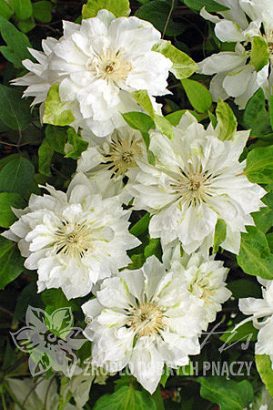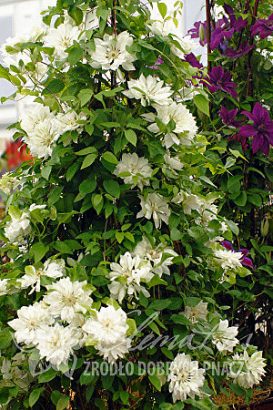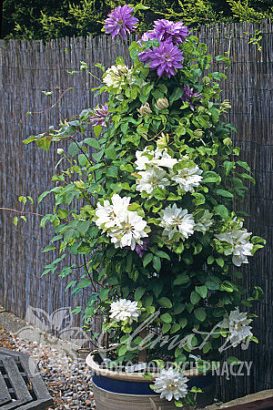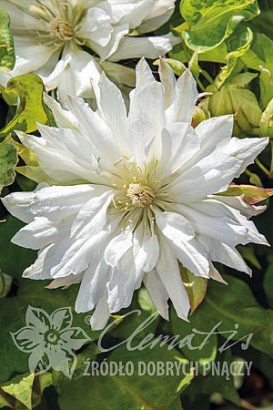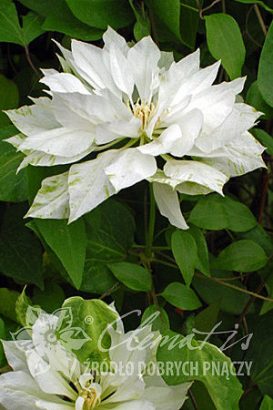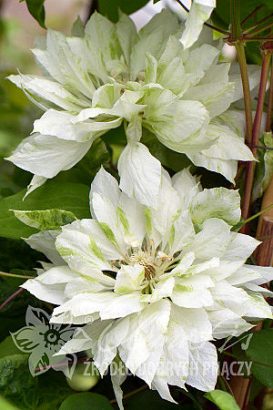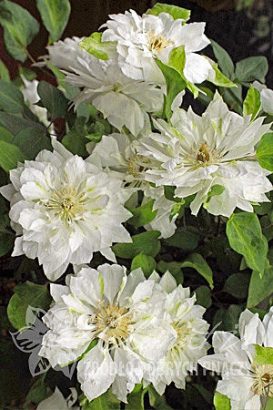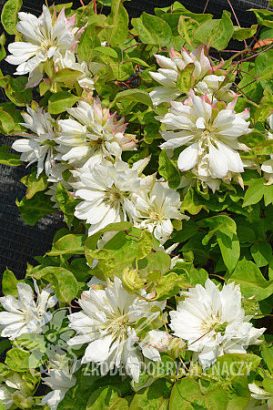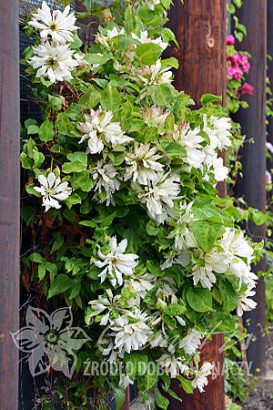Clematis ‘Yukiokoshi’
Clematis 'Yukiokoshi'| Color of flowers | white, double |
|---|---|
| Plants height | 2 m |
| Flowers size | big |
| Flowering month | V, VI, VIII, IX |
| Aspect | S, N, E, W |
| Pruning way | 2 (light) |
| Frost hardiness | Zones 4 - 9 |
An intriguing, very old Japanese cultivar selected from a natural site. The calyces formed with white, fantastically twirled sepals make for an amazing spectacle from spring till late summer.
WHAT IT LOOKS LIKE: Flowers large, 12–14 cm across, always double, consisting of 30–50 unruly, twirling, loosely set sepals, white and during the first bloom adorned with a green base and bar along the middle. Stamens have yellow anthers set on lemon coloured filaments. Bloom in second half of May till June and again, less generously, between August and September.
HOW IT GROWS: A climber supporting itself with leaf tendrils. Reaches 2–2.5 m height.
WHERE TO PLANT: Prefers fertile, moist but well-drained soil and sunny but not very sun-exposed sites. Frost hardy (zone 4–9).
HOW TO PLANT AND MAINTAIN: Before planting immerse the plant container in water for 10-30 min. Place the plant in a 60 x 60 x 60 cm hole with a 10-cm layer of pebbles and gravel at the bottom. Cover the roots with a bucket of well-rotten manure or compost and fill up with fertile soil. Place the plant base 5–10 cm deeper than it was before. Plant at least 30 cm from walls or other plants. The base should be in a shade. Cover the ground around the new plants with bark mulch and for winter protection pile it up to 10 cm. Fertilize with Osmocote 5-6 M, water generously in vegetative season. At the end of February or the beginning of March remove dead shoots and prune the live ones moderately – in the first year around 30 cm from the base, above the stronger buds, in the second year – 70 cm from the base and in following seasons – at 150 cm.
HOW TO APPLY: Recommended for cultivation along trellises, obelisks and other garden supports. It may interlace other plants. Looks particularly attractive against dark background.
ORIGIN: Selected from a natural site in Japan in 18th century. Imported to Great Britain in 1836 by P.F. Siebold.
SIMILAR CULTIVARS: ‘First Love’, ‘Sen-no-kaze’, ‘Midori’.

